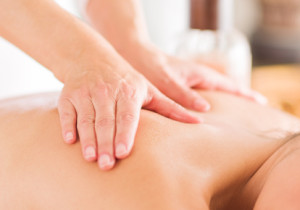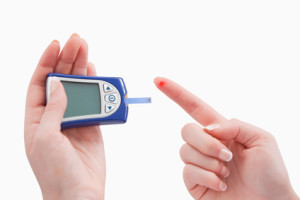Diabetes – You’re not Alone
Diabetes, both Type 1 and Type 2, are chronic metabolic diseases that require medical management. Type 2 diabetes is more common and it is estimated that 1-in-3 children born in the U.S. today will develop Type 2 diabetes during their lifetime. Fortunately, the treatment options and knowledge base is growing every day. Most people are looking for ways to enhance their healthy lifestyle. Receiving massage therapy can be one way of taking control, and nurturing your body, encouraging health and balance, and reducing symptoms and side effects naturally.
What is Diabetes
Diabetes is a condition of blood sugar imbalance related to production and uptake of a hormone called insulin. There are two major categories: Type 1 Diabetes requires insulin injections, and while Type 2 Diabetes is often manageable with diet and lifestyle adjustments, it also may require oral medications and insulin injections. The side effects of diabetes and its treatment may cause loss of vision, numb or overly sensitive hands and feet, fatigue, reduced circulation in the hands and feet, trouble with weight management, and frequent urination with possible urinary tract infections. The frequent blood sugar tests require pricking of fingertips, which can be uncomfortable and awkward.
Can Massage Help? Benefits of Regular Massage for Diabetics
“Stress plays a more direct role in the control of blood sugar than it does in any other disease,” according to Richard Surwit, PhD, author of The Mind Body Diabetes Revolution.
When we are stressed, the mechanisms that internally regulate blood sugar may not work effectively. This could result in extreme blood sugar swings which can be dangerous. Many people report that reducing stress helps their blood sugar levels stay steady. The Mayo Clinic website acknowledges the research showing that “Massage is effective treatment for reducing stress, pain and muscle tension.”
 “Massage therapy contributes an important piece to Living with this chronic disease and striving to balance all the factors involved in maintaining a healthy lifestyle — proper nutrition, adequate exercise, blood glucose monitoring, appropriate use of medications and stress management… Techniques that I have enjoyed receiving include Shiatsu/acupressure, Comfort Touch, body energy therapies, Polarity balancing, Manual Lymph Drainage, Therapeutic Touch, deep tissue therapy, Reiki and craniosacral therapy. ” excerpt from article by Mary Kathleen Rose, Therapeutic Massage and Diabetes (1)
“Massage therapy contributes an important piece to Living with this chronic disease and striving to balance all the factors involved in maintaining a healthy lifestyle — proper nutrition, adequate exercise, blood glucose monitoring, appropriate use of medications and stress management… Techniques that I have enjoyed receiving include Shiatsu/acupressure, Comfort Touch, body energy therapies, Polarity balancing, Manual Lymph Drainage, Therapeutic Touch, deep tissue therapy, Reiki and craniosacral therapy. ” excerpt from article by Mary Kathleen Rose, Therapeutic Massage and Diabetes (1)
A massage session is not much different for Diabetics than for other clients. Your therapist should take a complete health history, including any complications of diabetes you may be experiencing such as neuropathy or poor wound healing. But your therapist should also ask about other conditions or injuries you may have. You and your therapist should agree on goals for the session, and you should have a chance to explain your preferences for pressure, and the massage environment such as temperature, music, lighting, etc. You will always be allowed to dress in private, and will be kept covered during the massage, observing your modesty and keeping you warm.
Monitor Carefully
 Over the course of a few hours, a diabetic’s blood sugar levels can change significantly. This could cause low blood sugar, or hypoglycemia, and if unaddressed hypoglycemia can progress into life threatening hypoglycemic shock. The relaxation that comes with massage may alter one’s perception of their blood sugar levels. So it is important that you take your glucose meter with you and check your levels before, during and after your massage. We recommend you interview a few therapists to ask questions about their credentials and experience, and to make sure they know what the signs of hypoglycemia are. Your therapist should agree to prompt you to check your glucose levels at the prearranged time periods.
Over the course of a few hours, a diabetic’s blood sugar levels can change significantly. This could cause low blood sugar, or hypoglycemia, and if unaddressed hypoglycemia can progress into life threatening hypoglycemic shock. The relaxation that comes with massage may alter one’s perception of their blood sugar levels. So it is important that you take your glucose meter with you and check your levels before, during and after your massage. We recommend you interview a few therapists to ask questions about their credentials and experience, and to make sure they know what the signs of hypoglycemia are. Your therapist should agree to prompt you to check your glucose levels at the prearranged time periods.
How do you choose a practitioner?
Check with your city or state to find out what the basic requirements are for massage therapists. Get a few names and numbers and start calling. Your interview should include questions about training and experience in general practice, and also experience with Diabetic clients. Ask about office environment and policies. Massage should never hurt. A conscientious massage therapist will constantly seek your feedback during the massage to make sure that the treatment is within your comfort zone the entire time. If you don’t feel that your feedback or concerns are (or will be) addressed, you’re not in the right place.
Massage has many benefits, yet it can’t be considered a substitute for regular medical care. Massage Therapists are not medically trained, and cannot give advice on managing diabetes or any other medical conditions. You should inform your doctor that you’re receiving massage and be sure to follow your regular treatment routine.
The Medical Fitness Network can help you find a reliable, educated massage practitioner in your area to help you manage stress, and reduce muscle tension. Let massage touch your life and add to your health and wellbeing!
Click here to find a Medical Fitness Network massage therapist.

